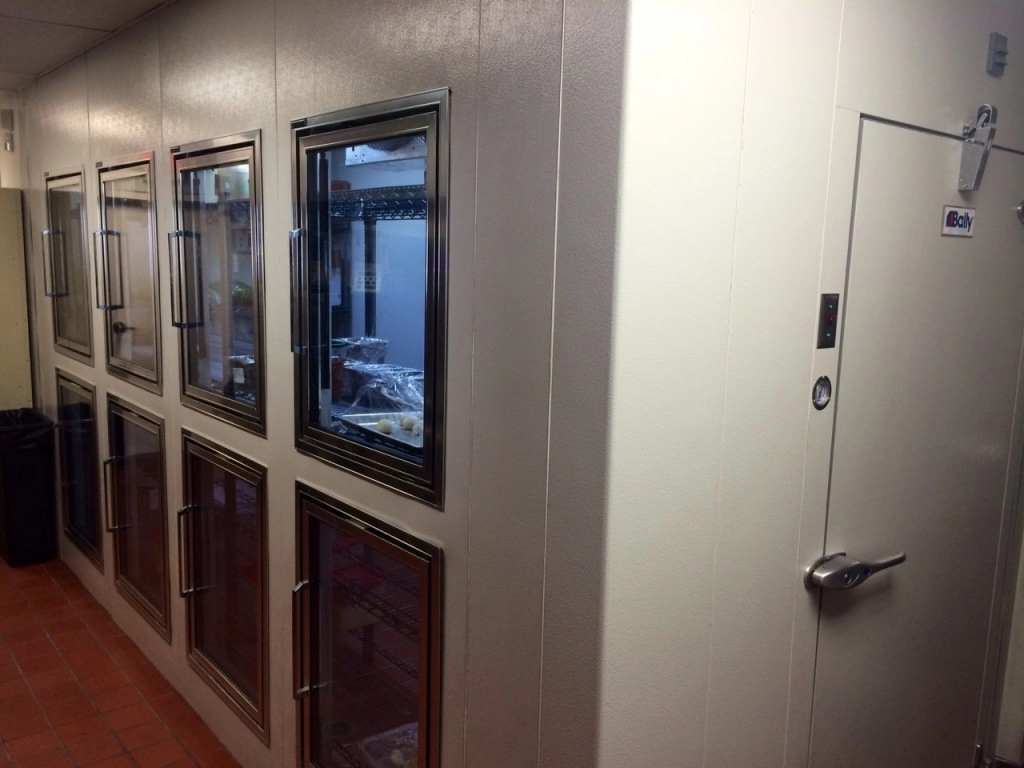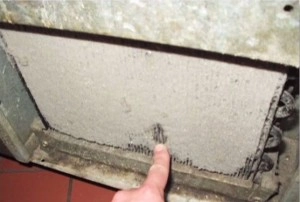This is the fourth in a four-part series on designing or upgrading a school cafeteria. The series is tailored for school nutrition directors but information on how various areas of equipment can improve the quality of meals, food safety and energy efficiency are of use to any commercial kitchen operation. Our four items of discussion are 1) Dish machines, 2) Combi ovens, 3) Serving lines and 4) Walk-in Coolers and Freezers. For the benefit of school nutrition directors, each post will address how these new pieces of equipment can help in the following areas: 1) improve the quality of school meals, 2) improve the safety of food served in school meal programs, 3) improve overall energy efficiency of school nutrition operations, 4) improve or expand participation in national school lunch program or school breakfast program. We hope you find this series helpful.
*-*-*-*
School Nutrition and Kitchen Equipment: Walk-In Cooler and Freezers
SUMMARY READ: Replacing your school’s walk-in cooler or freezer can:
- IMPROVE THE SAFETY OF FOOD SERVED IN SCHOOL MEAL PROGRAMS by providing more controlled refrigeration temperatures that can be regularly monitored.
- IMPROVE THE OVERALL ENERGY EFFICIENCY OF SCHOOL NUTRITION OPERATIONS through the use of modern coolants, LED lights and systems like Bally’s SMART VAP that defrosts only when needed.
- IMPROVE THE QUALITY OF SCHOOL MEALS by allowing more fresh products to be used in place of frozen food options.
A walk-in cooler or freezer is one of the largest investments made in a school foodservice operation. Proper refrigeration is critical to ensuring the food safety for the students you serve, along with keeping your operating costs low through better energy efficiency.
WALK-IN BASICS
A walk-in is an oversized refrigerator or freezer that is primarily made up of three components: a condensing unit, an evaporator and the walk-in room itself. The condensing unit is typically located remotely outside, most often found on the roof. The evaporator is comprised of several fans mounted inside the walk-in, usually hanging from the ceiling. The walk-in itself is built with insulated panels mechanically locked together to form an airtight seal.
Walk-ins can be built inside or outside a building and can also a combination cooler/freezer unit. In certain cases they may be able to use an existing concrete pad instead of a dedicated insulated floor. Other components of a walk-in can include strip curtains, used to help keep cool air from escaping when the door is open, ramps and shelving.
Insulation ratings for walk-ins are measured in R-value with the “R” standing for thermal resistance. The higher the R-value the better a walk-in is at keeping cool.
Dine Company works primarily with two walk-in manufacturers, Bally and Kolpak. Combined, the two brands have more than 125 years’ experience in working with walk-ins.
QUALITY REFRIGERATION ENSURES TO FOOD SAFETY
There can be countless health concerns if your existing walk-in refrigeration is in poor condition – ice, mold, stagnant water and interior rust are just a few of the most common issues or warning signs. A tight door seal is one of the critical areas to monitor in keeping warm, moist air from entering the cooler/freezer. Also, be mindful of loose food carts and unstable shelving that can damage your door or puncture the walk-in panels. Optional kick plates or bumper systems can help prevent this type of damage and extend the life of your walk-in.
Keeping your walk-in in good condition or upgrading your unit is an essential piece of a food safety program. Both Bally and Kolpak offer 10-year warranties on construction and a minimum of four inches of insulation in the panels, exceeding federal guidelines.
Additional food safety support can be added with products like Comark’s RF500 temperature tracking hardware that allows for regular refrigeration monitoring sent to your computer or mobile devices. The Comark system is available for single or multi-facility setup and can greatly add to your food safety recordkeeping and HAACP compliance.
ENERGY EFFICIENCY GAINS
If your walk-in is nearing 15 years of age, it is likely time to consider a new, more efficient walk-in. While upfront costs are always a consideration there are considerable ongoing energy savings with a newer unit.
One example of new energy-efficient systems is Bally’s SMART VAP which electronically controls the walk-in box temperature, defrost start and stop times and fan delay. By monitoring the condenser coil and only defrosting as needed rather than on a set schedule, the SMART VAP system can save up to 27 percent in energy usage compared to traditional systems.
Another area of recent energy efficiency gains is with lighting systems within the walk-in. Sensors can now automatically turn off lights to conserve energy use and optional LED lighting is more efficient than traditional units with more burn hours per bulb. This also allows for better food safety through increased visibility for food rotation.
SUPPORT FROM DINE COMPANY
As federal school guidelines increasingly calling for fresher products rather than frozen food options, proper refrigeration is essential for your school cafeteria. Dine Company can help you with every step in considering a new walk-in from identifying needs like what size walk-in best fits your operation to helping with layout/design and being on-site to install your unit. Dine Company can also assist with your other refrigeration needs like reach-in units, refrigerated displays and grab-and-go merchandisers, and milk coolers.
Contact us for more information on getting a walk-in cooler or freezer that works for you.



